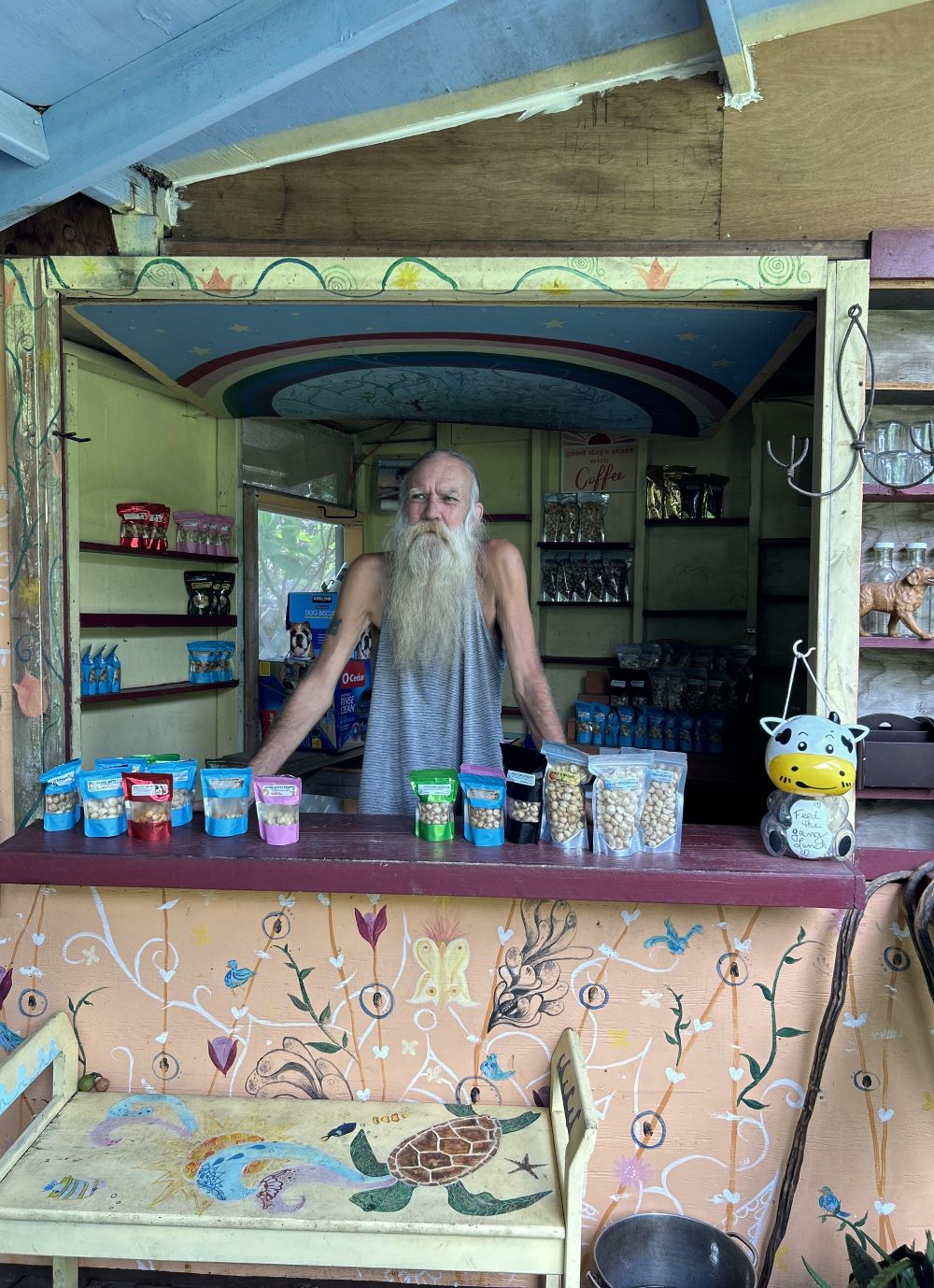
PLEASE NOTE, THIS POST MAY INCLUDE AFFILIATE LINKS, MEANING THAT IF YOU CLICK ON A LINK AND MAKE A PURCHASE, I'LL RECEIVE A SMALL COMMISION. THIS WILL COME AT NO COST TO YOU.
Pineapples, coffee, and Macadamia Nuts, are the foods that come to mind when thinking of Hawaiian agriculture. Fans of agritourism, we look forward to visiting farms when on trips. We assume there are an abundance of macadamia nut farms to tour, and we will have a difficult time choosing which Macadamia Nut Farm in Hawaii, to visit. We are mistaken. Apparently the best Macadamia Nut Farm in Hawaii to tour, closed, and never reopened. Logistics and itinerary, leave us with two Big Island options, Joe’s Nuts Farm and Mauna Loa.
Mauna Loa–Keaau, HI
The Mauna Loa Visitors’ Center is located on The Big Island, about 15 minutes outside of Hilo. Hilo is a popular cruise port, and Mauna Loa is included in a lot of cruise ship excursions. With its distinct blue and white packaging, Mauna Loa is one of the most recognizable macadamia nut brands in the world. Every gift shop in Hawaii, has a shelf dedicated to this Macadamia Nut Farm in Hawaii.
Our car winds through the macadamia nut tree orchard, stopping at the large visitors’ building.
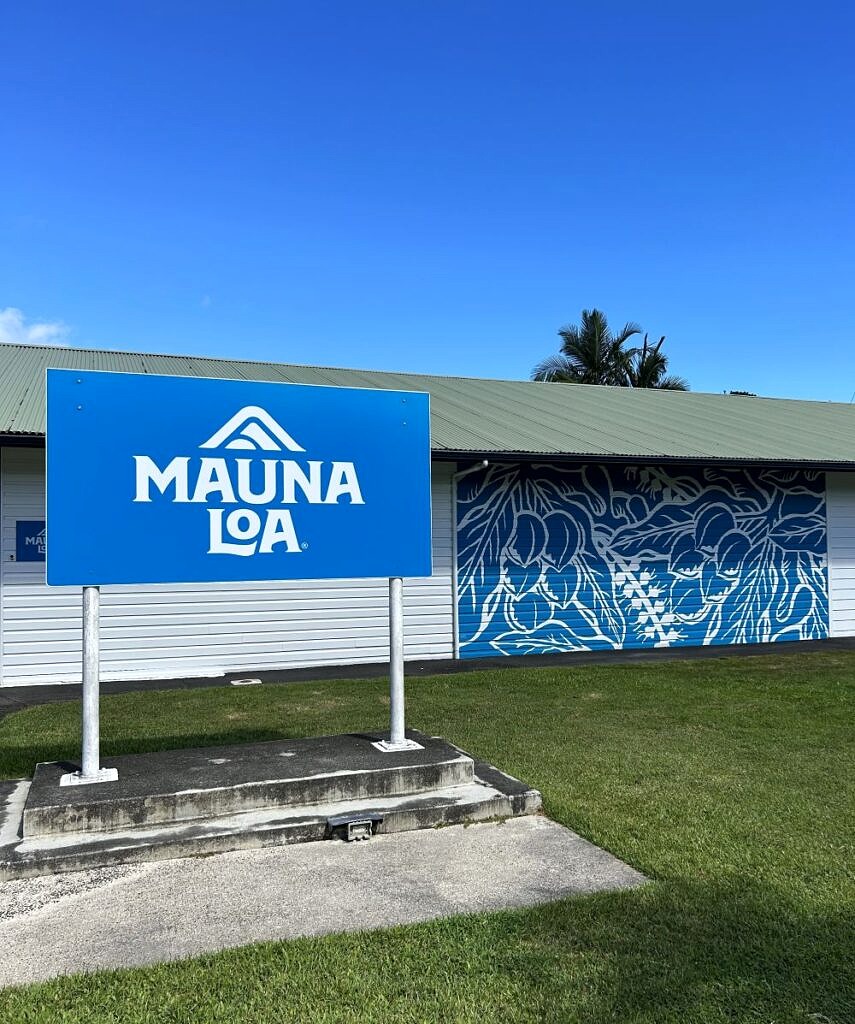
The staff are friendly and enthusiastic.
They encourage us to try all of the flavors. Staff use small tongs to drop the nuts into our palms. There is a row of savory jars that include flavors like Sea Salt and Onion Garlic.

There is a sweet side, displaying Dark Chocolate and Gingerbread.
A television hangs in the covered, outdoor, seating area. A video plays on loop, demonstrating how Mauna Loa grows, harvests, and processes nuts.
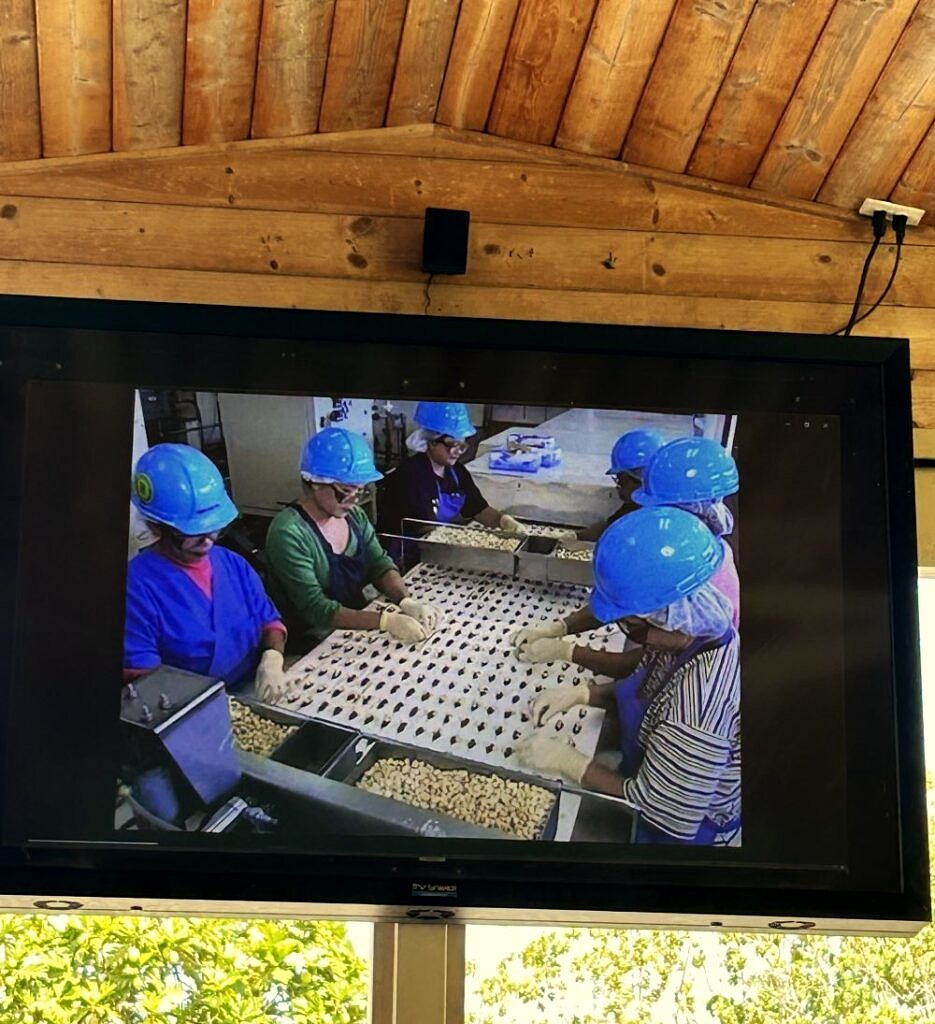
The property includes a small, brief, nature walk, complete with an information sheet, identifying the various plants and wildlife.
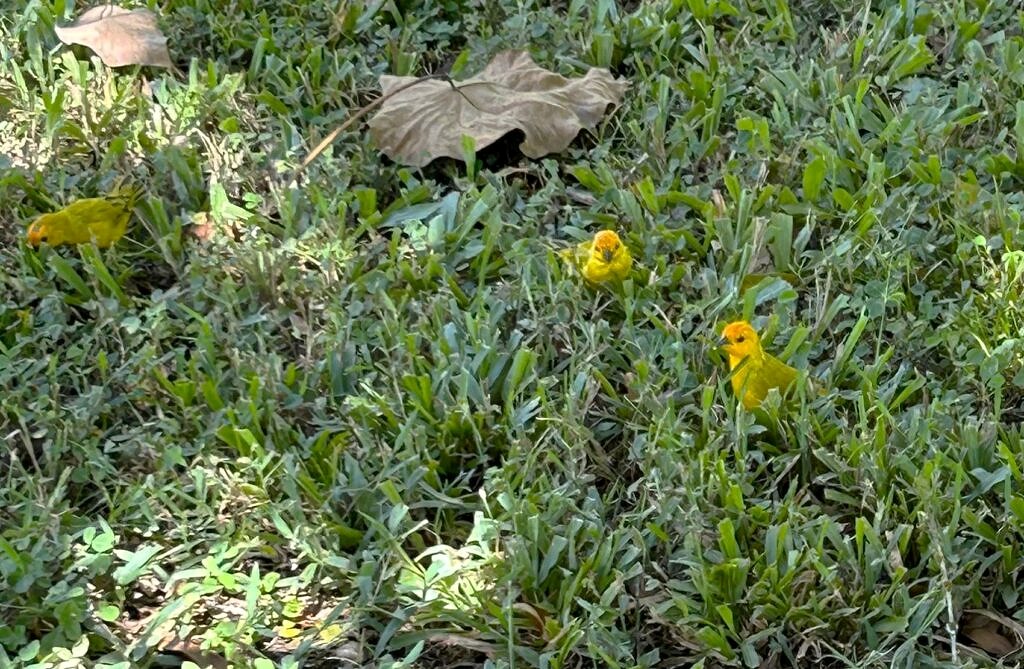
We enjoy Mauna Loa, more than we thought. After days of physical exertion, it’s nice to have a little break.
Heavily influenced by the generous samples, we leave with several bags of nuts.

Recently, Mauna Loa has come under scrutiny. Macadamia Nuts are indigenous to Australia. The plants were first brought to Hawaii for the pretty flowers, and only later, grown for food. The majority of macadamia nuts packaged for consumption, are not grown in Hawaii. If you purchase a bag of Mauna Loa nuts, you may munch a few Hawaiian grown nuts, but you also munch on nuts grown in Australia, South Africa, China, and/or Kenya.
Joe’s Nuts Farm–Captain Cook, HI
The contrast in online reviews intrigues me. For some, visiting this Macadamia Nut Farm in Hawaii, is a trip highlight. Others use words like, terrible, to describe their farm tour. I decide either way, it will be interesting. Since the farm is located near the Ka’awa Loa Plantation Bed and Breakfast, in Captain Cook, we decide it is a must-do.
We ride up the driveway path and follow the parking instructions.

The parking sign makes us smile.
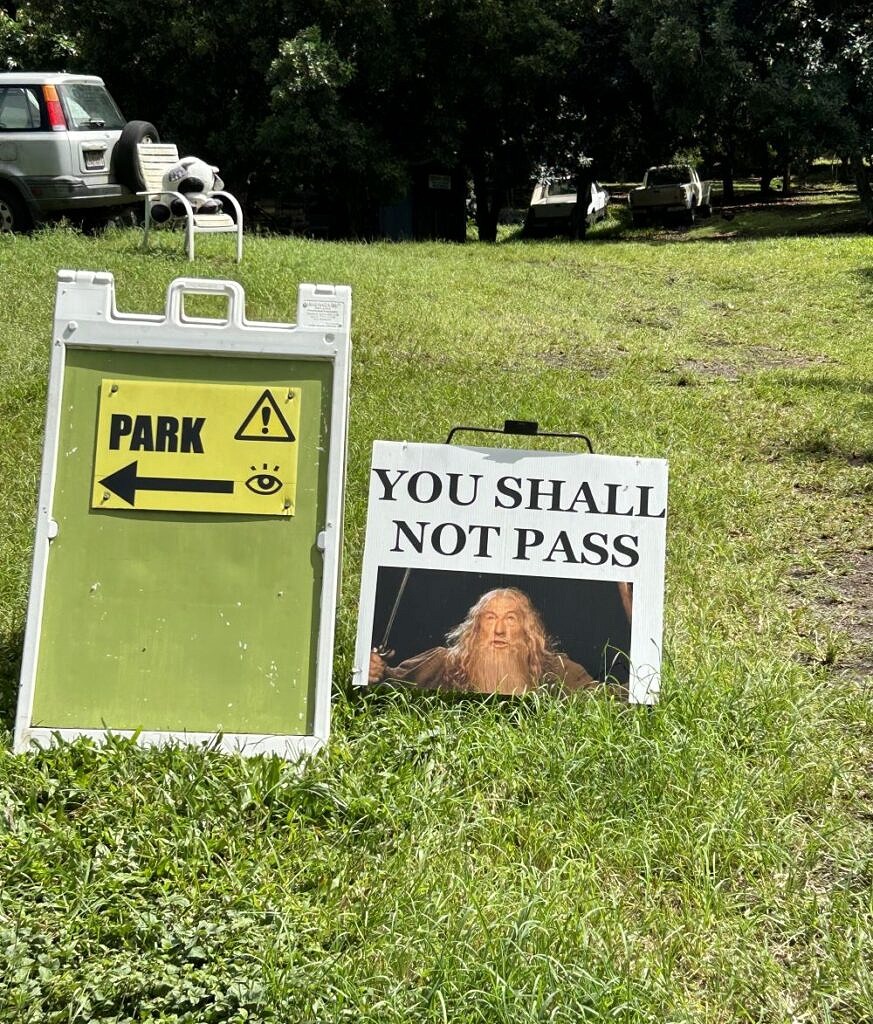
It’s a good indication that this is our kind of place.
No sooner do we step out of the car, then a man, resembling the wizard Gandalf emerges. Instead of wizard robes, he dons a tank top and cargo shorts. It’s Joe. He inquires if we would like a free farm tour.
Joe leads us into a stand of macadamia nut trees.

He tells us about the trees and lets us hold a freshly fallen nut. We discuss the shell’s strength. It’s a tough nut to crack. That’s why macadamia nuts are more expensive than other nuts.
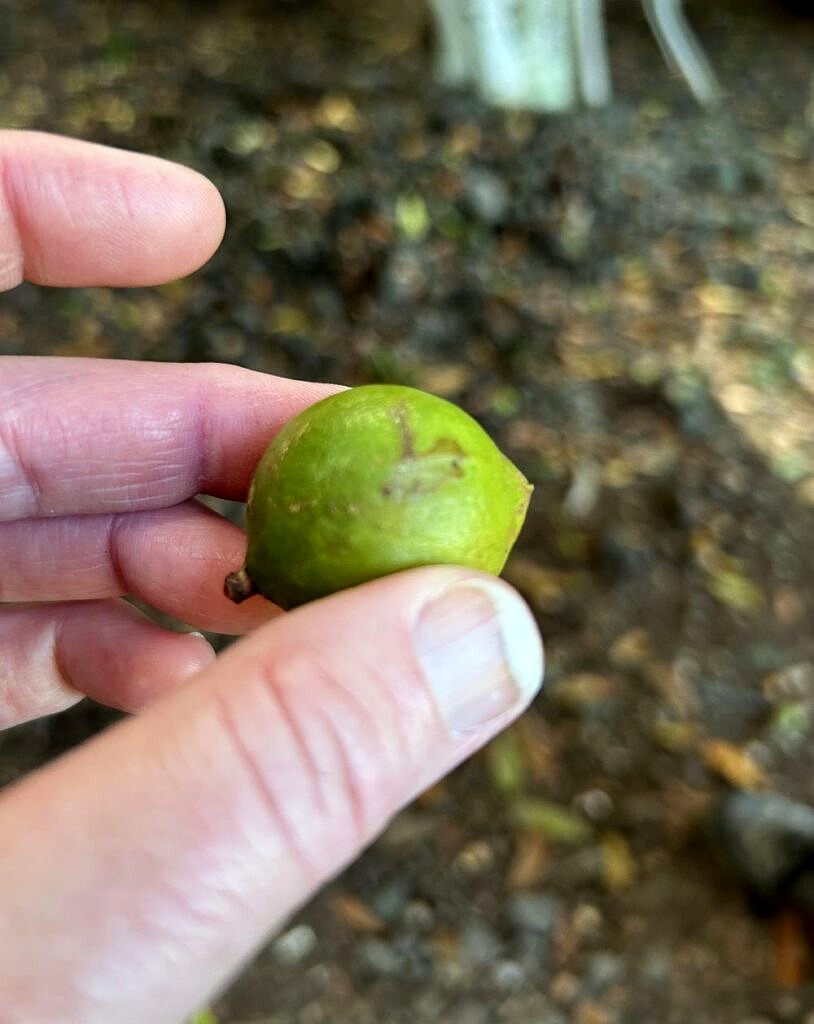
Joe describes his farm’s harvesting process, as chickens and dogs scamper about the farm. Farms in Hawaii use dogs, cats, and chickens, as an organic form of pest control.
We’re curious how Joe came to own a Macadamia Nut Farm in Hawaii. He admits that the farm is a labor of love. Harvesting and processing macadamia nuts on a small farm, is hard work.
Joe invites us to the sales shack to taste the farm’s current flavors. I’m instantly in love with the shack’s art. It is here I snap one of the favorite pictures I’ve ever taken.

Joe shares which flavors are popular, which he’s thinking of discontinuing, and which he’s thinking of trying to make in the future. We sample all of the flavors. The most unique are the Nori Komi Furikake and Lilikoi & Wasabi. The nuts are delicious.
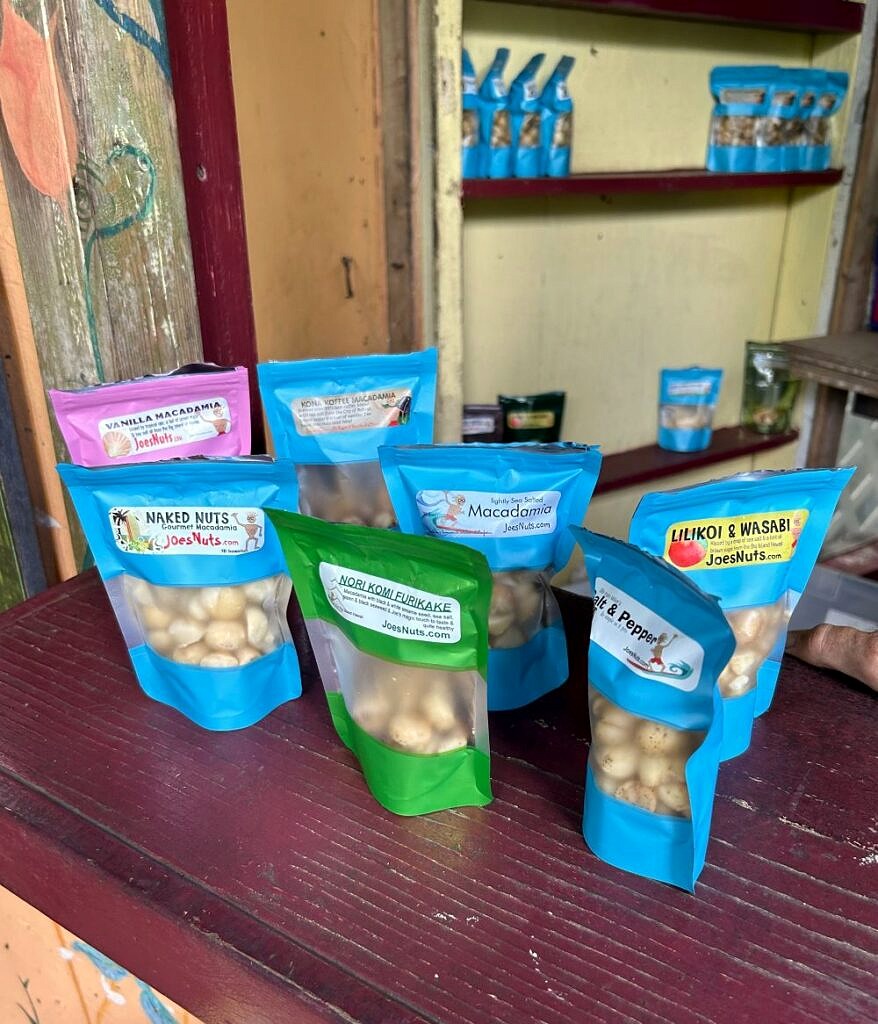
You can taste the difference between these small farm nuts and the nuts that come from large commercial producers.
We purchase a bag of every flavor for ourselves, then pick out a few bags we think friends will like.
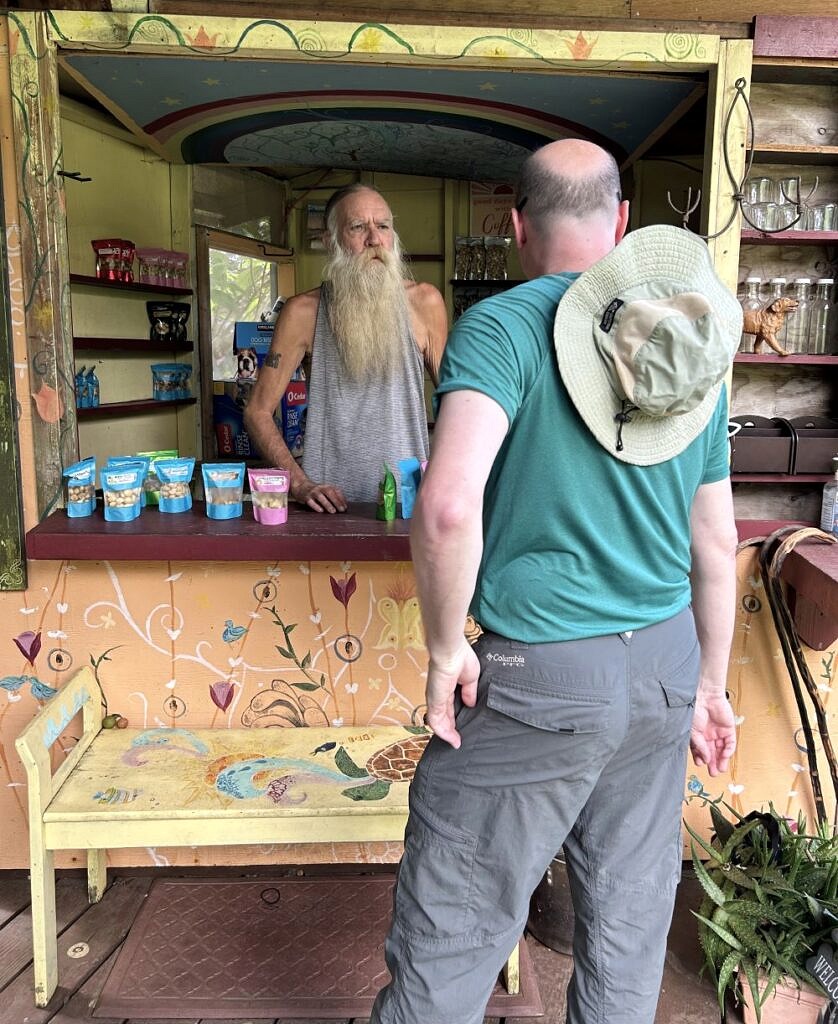
It’s a unique experience, and meeting Joe, and seeing the farm, was a trip highlight for us.
Just a minute to address some of the negative reviews
- An individual’s tour happiness, seems based on who gives the tour and tasting. We are fortunate to get Joe on the day we visit. He is the best reviewed tour giver.
- Expectations. A lot of people who gave negative reviews, read zero reviews themselves. They visited based on a recommendation by a local. It seems they were expecting more of a large, highly organized, tourist catered encounter, ala The Dole Pineapple Plantation. They weren’t expecting a small farm, with an owner in a tank top and cargo shorts, who sells nuts out of a painted wooden shack.
- The nuts are more expensive than the ones you can buy elsewhere. Yes, were you even paying attention during the tour? The nuts only come from this small Macadamia Nut Farm in Hawaii. The owners and a small number of staff do all of the work. Most of the nuts that you find in major stores aren’t from Hawaii.
Sadly macadamia nut farming, and farming in general, is starting to move away from Hawaii. The farmers who continue producing sources of food, despite the difficulty, should be applauded, and I encourage you, wherever you travel, to find a small farm to visit and support.

Comments are closed.
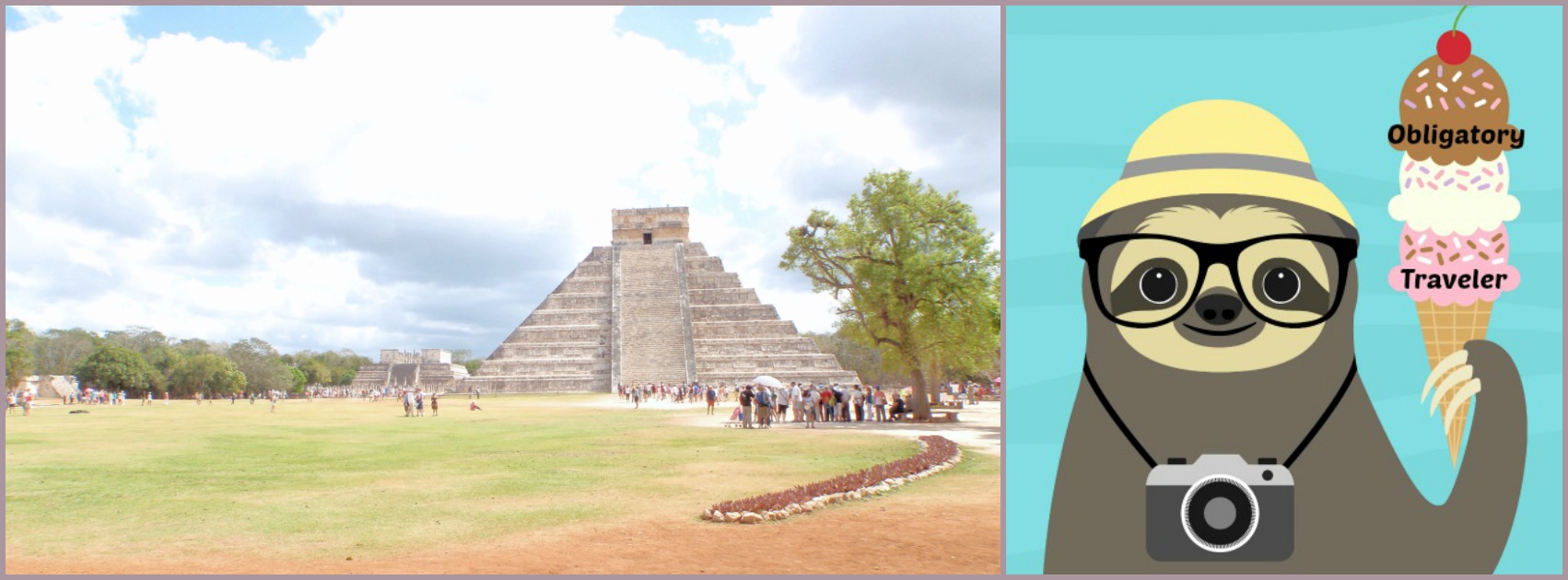
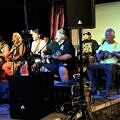
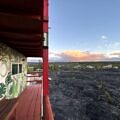


Michael Taylor
atI love macadamia nuts, especially chocolate covered ones. It’s,a bit disappointing that they’re not native to Hawaii, even more so that most of the ones we buy weren’t even grown there. I’ll make sure to check the packaging next time I buy them.